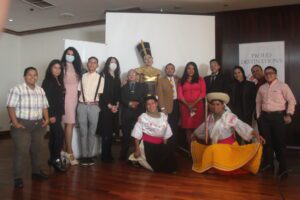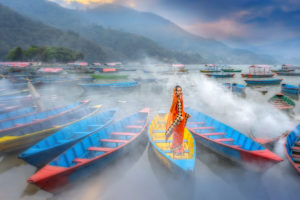
A new documentary “Rio Fashion Week: Fashion Week Internationale” explores the phenomenon of how transgender models have carved a place in Brazil’s fashion industry and gained international acclaim.
As the city ratchets up the global ladder to claim its place at the top 10 of the world’s financial centers at #6 in the world economy and strut its stuff down the international catwalk of the fashion world, the documentary’s host Charlet Duboc questions if Eurocentric dominance of beauty standards will trump Brazil’s bottom centric beauty ideals and taste for transgender models.
The documentary also journey’s into Rio de Janeiro’s street fashions, dance trends, and the contrast between the high flying lives of Rio’s transsexual models to that of the reality of the city’s transgender sex workers.
“I believe that Brazil is famous for the transsexuals,” says fashion designer Antonio Bizarro who uses transexual models frequently.
“The fashion market embraces the transgender models. We need this kind of models,” he says. “We started this with Andrej Pejic, that had that androgynous look, and I think that the transgenders like Leah T and Carol Marra are the next step in fashion.”

Leah is Brazil’s transgender super model who skyrocketed to international fame in 2011 when she graced the cover of LOVE, a Brazilian fashion magazine, kissing fellow androgynous model Kate Moss. Leah also appeared on Oprah in the U.S.
This season Antonio’s collection explores South Asian influence on fashion. He openly embraces the nuanced androgyny, that is a part of South Asian culture, and “third sex”, which he explains is a class of “gurus.”
Carol was his model of choice, but Antonio wasn’t the only fashion designer who hired a transgender model to parade down his catwalk. Another fashion designer, whom he didn’t name in the documentary, also chose another transgender model to show off their collection, he says.
Carla, Leah, and their cohorts are today’s top models in Brazil, but it was Roberta Close broke the barrier for transgender models in the 1980s as Rio’s first celebrated transgender model, according to the documentary.
Transgender models wasn’t the only focus of the documentary, she also found that Brazil’s fashion world was under attack for being racist. A Franciscan friar at a local church claims that the catwalk lacks sufficient number of black models. Brazil’s black or mixed race population has slightly superseded the white population, 49.6% blacks compared to 49.4% whites, according to Brazil’s 2009 census. In 2010, the friar was successful in his campaign resulted in a government quota that there would be “no less than 10% of black models on the catwalk” the following year the ruling was “repealed deemed unconstitutional,” reports Charlet.
Fashion experts denied the preacher’s claims that Brazil’s fashion industry is racist, stating that the industry welcomes black models with open arms.

“We are open for these black people arriving in these shows,” says Sergio Mattos, founder of 40 Degrees Modeling Agency and modeling talent mogul who has discovered some of Brazil’s top most models.
When he started his agency clients only asked for blondes, but he doesn’t have blonde models showing her a diverse array of Brazilian models who depict the beauty the world has come to know from the ethnic mixture of Portuguese, indigenous people, and African’s who were bought to the country during the enslavement, he tells Charlet.
Charlet jettisoned the catwalk and fashion parties to explore Brazil’s street fashions, dance styles, and the fashion and lives of transsexual sex workers with Cage of Hot Girls, all-girl funk band who champion the Brazil’s famed bum dance. She met up with a transsexual street walker and her friend exploring the contrast of their lives to those of the transsexual models she met backstage at fashion week.
At the end of her Brazilian experience, Charlet expresses concern that Brazil’s unique taste for transgender models as well as buxom bottoms might be lost as it continues to make headway onto the homogenized global marketplace.
The documentary was produced by Vice Media, Inc.
To contract an original article, purchase reprints or become a media partner, contact ">editor [@] girlsthatroam [.] com.







